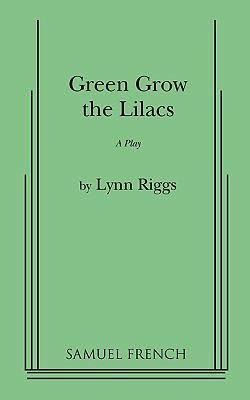6.8 /10 1 Votes6.8
Place premiered Tremont TheaterBoston First performance 8 December 1930 | 3.4/5 Goodreads Date premiered December 8, 1930 Original language English | |||||||||||||||||||||||||||||||||
 | ||||||||||||||||||||||||||||||||||
Places premiered Tremont Theatre, Boston, Boston Similar Oklahoma!, Pipe Dream, Me and Juliet, Allegro, Carousel | ||||||||||||||||||||||||||||||||||
Green grow the lilacs u s naval academy masqueraders
Green Grow the Lilacs is a 1930 play by Lynn Riggs named for the popular folk song of the same name. It was performed 64 times on Broadway, opening on January 26, 1931, and closing March 21, 1931. It also played January 19 through January 24, 1931, at the National Theatre in Washington, D.C. It was produced by the Theatre Guild and directed by Herbert J. Biberman. Rather startlingly, the debonair, ultrasophisticated actor Franchot Tone portrayed cowboy Curly. June Walker was seen as his sweetheart Laurey. Tex Ritter sang four songs in the role of Cord Elam and was understudy for the lead part as Curly, though he never had occasion to perform in that role. Theatre Guild board member Helen Westley, who had appeared as Mrs. Muskat in the original Broadway production of Ferenc Molnár's Liliom, played Aunt Eller. Lee Strasberg, later to become a renowned teacher of method acting, played the part of the Syrian peddler. The play also toured the Midwest, and was nominated for a Pulitzer Prize. It appeared at the Dallas Little Theatre during the week of March 7, 1932, and again in Dallas at the Festival of Southwestern Plays, on May 10, 1935.
Contents
- Green grow the lilacs u s naval academy masqueraders
- Gordon macrae green grow the lilacs
- Characters
- Setting
- References
The 1943 Rodgers and Hammerstein musical play Oklahoma! was based on the Riggs play. Oklahoma! used a new score rather than the old folk songs in Riggs's work, but the plot is almost identical. The endings are different: unlike the musical, the end of Green Grow The Lilacs is left rather undecided as to Curly's trial for accidentally killing farmhand Jeeter (renamed Jud Fry in the musical). In addition, the cowboy Will Parker is only referred to in the original Riggs play and does not actually appear in it; therefore, the entire comic subplot involving the fifty dollars that Will must obtain in order to be able to marry Ado Annie is an invention of Hammerstein's.
Green Grow the Lilacs is today largely forgotten in its original form, while Oklahoma! remains one of the most acclaimed and popular American musicals ever written.
Gordon macrae green grow the lilacs
Characters
Setting
Indian Territory, 1900
The "front" or living room of the Williams farmhouse, a June morning
Laurey's bedroom
The smoke house
The porch of Old Man Peck's house, that night
The hayfield, a month later
The "front" room, three nights later
